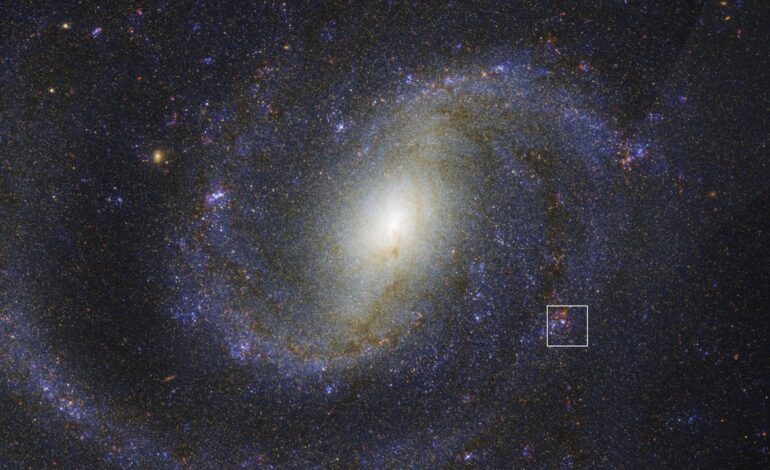James Webb Space Telescope Unveils Hidden Supernova Star

The James Webb Space Telescope (JWST) has identified a previously hidden star, designated as a “doomed” red supergiant, providing crucial insights into a long-standing astrophysical mystery. This massive star was observed just before it exploded into a supernova, an event that occurs when such stars reach the end of their life cycle. The findings, which are detailed in a study published on October 8, 2023, in The Astrophysical Journal Letters, support the hypothesis that many red supergiants may be obscured by dense clouds of dust.
For decades, astronomers have sought to understand the nature of red supergiant star explosions. “Only now, with JWST, do we finally have the quality of data and infrared observations that allow us to say precisely the exact type of red supergiant that exploded and what its immediate environment looked like,” said Charlie Kilpatrick, lead author of the study and a research assistant professor at Northwestern University in Illinois.
Significant Observations and Discoveries
The newly identified supernova, named SN 2025pht, originated from a galaxy known as NGC 1637, located approximately 38 million light-years from Earth. This distance is relatively close in astronomical terms. The supernova was first detected in June, marking a significant observation in the ongoing study of stellar explosions.
Kilpatrick and his team utilized historical data from the Hubble Space Telescope alongside the latest JWST images to trace the progenitor star of the supernova. They noted that the red supergiant emitted light approximately 100,000 times brighter than the sun, yet its luminosity was significantly diminished, largely due to thick clouds of dust that enveloped it. This dust effectively obscured shorter wavelengths of light, providing a challenge for previous observational methods.
Implications for Understanding Stellar Explosions
The findings imply that the most massive aging stars might also be the dustiest. Kilpatrick indicated that this dust could block a significant portion of the light, making it difficult to observe these stars before their explosive demise. The JWST’s advanced infrared capabilities allowed scientists to capture the longer red wavelengths, offering an unprecedented glimpse into the life cycle of a red supergiant on the verge of explosion.
“SN 2025pht is surprising because it appeared much redder than almost any other red supergiant we’ve seen explode as a supernova,” Kilpatrick remarked. This observation suggests that previous supernova explosions might have been far more luminous than previously believed, as earlier data did not have the same sensitivity provided by the JWST.
The implications of this research extend beyond the immediate findings, potentially reshaping our understanding of stellar evolution and the lifecycle of massive stars. With the JWST continuing to deliver groundbreaking observations, the astronomical community anticipates further revelations that could clarify the complex processes behind supernovae and their progenitor stars.






